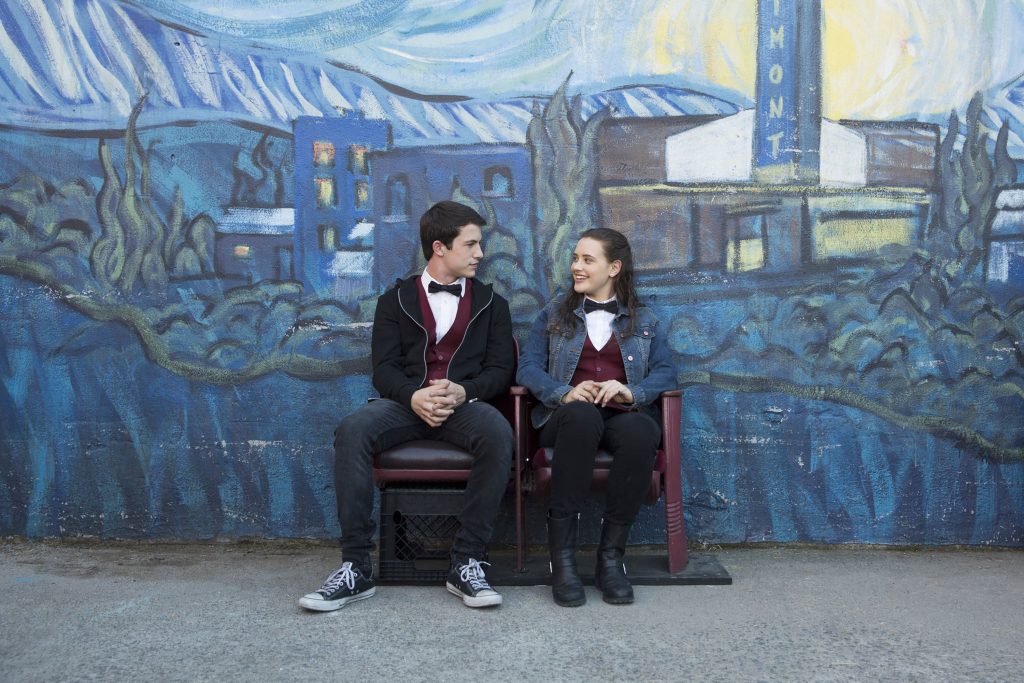On March 31, Netflix released a new streaming show that has gained increasing attention among young people. “13 Reasons Why” follows the story of Hannah Baker, a teenager who died by suicide.
Before her death, Hannah secretly records 13 audiocassette tapes describing the reasons she is taking her life, and the people she considers responsible. She mails the tapes to a friend the day of her suicide, asking him to pass the tapes along to the people mentioned. Throughout the course of the 13 episodes, the audience slowly learns more about Hannah’s tragic high school years.
The topic of suicide is regrettably relevant today. Suicide rates have risen steadily in the last 15 years, tripling for teen girls under age 14, and suicide is the second leading cause of death among people aged 15-24. There is also a concerning new trend of live-streamed suicides through social media. But while supporters claim that “13 Reasons Why” helps raise awareness regarding suicide, suicide prevention experts write that it hurts more than helps.
Throughout the show, Hannah’s high school classmates grapple with challenging issues, including substance abuse, bullying, sexting and violence. The most jarring and unnerving scenes involve graphic depictions of sexual assault and suicide. These scenes are disturbing at best, grossly negligent and irresponsible at worst.
Showing the explicit action of Hannah’s suicide is unnecessary and it becomes the climactic scene, the agency for her immortalization. Showing suicide “live and in stereo” helps no one, and undermines the message of prevention.
“13 Reasons Why” also seeks to place blame for Hannah’s death. Although Hannah is rightly portrayed as a victim of circumstances, the tapes she records blame the secondary survivors: her peers and school counselor. Each cassette glamorizes her suicide as payback, instead of tragedy and loss. From beyond the grave, she tells 13 people to take responsibility for causing her death.
The viewer listens to Hannah’s tapes with good guy Clay, who is aching to learn what he could have possibly done to hurt Hannah and “cause” her death. There is no way to be absolved now, no way to ask forgiveness. But this is wrong. It is never the fault of friends or family. Blaming surviving loved ones encourages survivor’s guilt and increases the stigma of an already painful loss.
The show also suffers from a gaping hole in the discussion of mental illness. Research has found that as many as 90 percent of people who die by suicide suffer from a diagnosable mental illness, but not once is the topic discussed in the whole series. This was a missed opportunity.
Had the show brought up mental illness, Hannah’s character may have been able to highlight the options for treatment, such as counseling and other methods of support for a disease that affects so many today. Without even a discussion, it makes it appear as though Hannah has no other recourse but suicide.
The thought that kept running through my mind is that as Hannah records each of her 13 reasons, she is still alive. There were still people who loved and cared about her. Still so many chances to seek help.
“13 Reasons Why” is not the awareness vehicle we need. But we should continue the conversation around suicide and mental health. Our young people deserve an honest and serious look at these issues. If you have lost a loved one to suicide, please know that it is not your fault. And if someone you know shows signs of suicidal ideation, encourage them to reach out to you, a crisis line or for professional help.
Talking Points for Parents with Teens from JED/SAVE
rnwww.jedfoundation.org/13-reasons-why-talking-points/
Suicide Prevention Hotline: 1-800-273-TALK (8255)
rn

